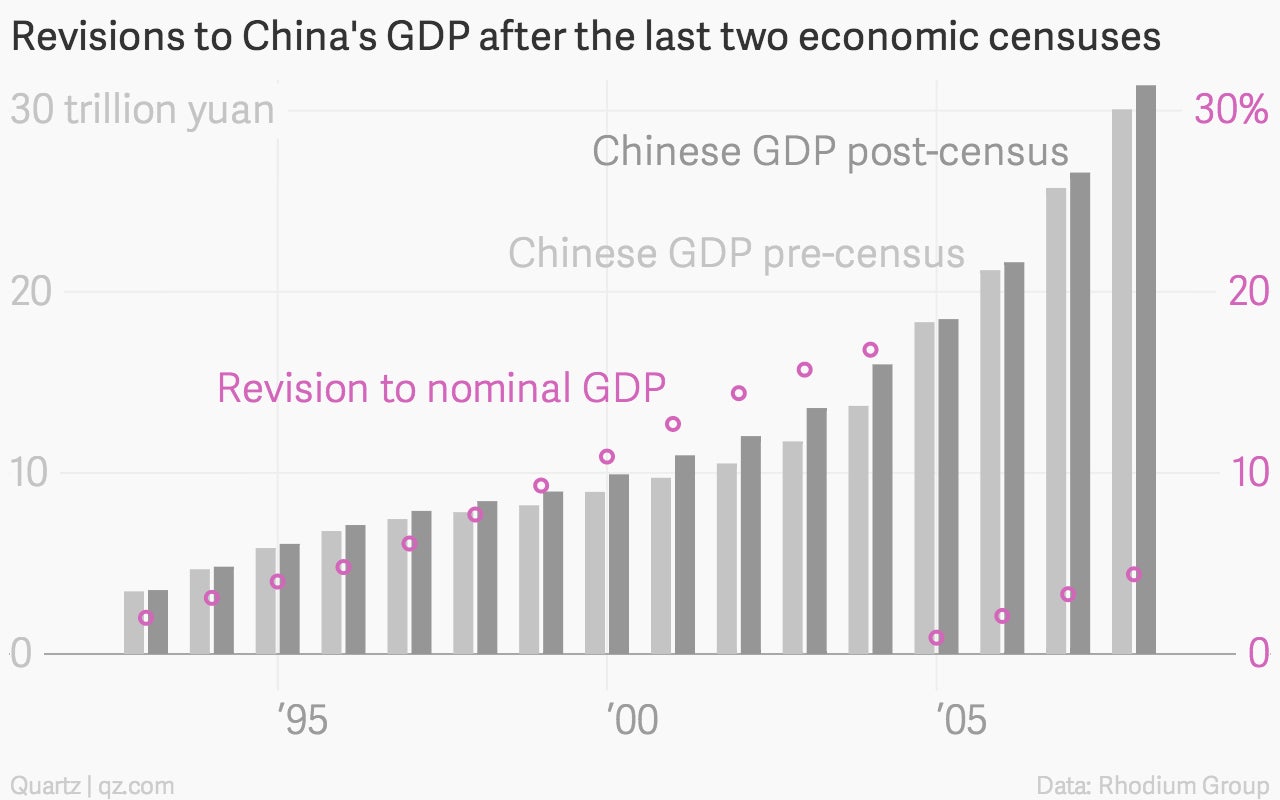Tomorrow China’s GDP might suddenly get 10% bigger
China’s economic data is notoriously sketchy—and its leaders are the first to admit this. As premier Li Keqiang once told the US ambassador that GDP figures are “‘man-made’ and therefore unreliable” (paywall), according to a paraphrased diplomatic cable.


China’s economic data is notoriously sketchy—and its leaders are the first to admit this. As premier Li Keqiang once told the US ambassador that GDP figures are “‘man-made’ and therefore unreliable” (paywall), according to a paraphrased diplomatic cable.
But that’s changing. Tomorrow, the Chinese government will likely announce the results of its economic census, as well as GDP revisions based on international standards for calculating national accounts. Based on the results of past economic census revisions, China’s 2013 GDP will be boosted by around 5%, says Mark Williams, chief Asia economist at Capital Economics, in a note.
If the results incorporate the new national accounts standards it could be even more—by up to 10%, says Williams. That would bump up China’s 2013 growth rate by a possible 0.2 percentage points, to an impressive 7.9%.
During the previous two economic censuses, Chinese statisticians bumped up China’s nominal GDP considerably by counting previously overlooked data, as Daniel Rosen and Beibei Bao of the Rhodium Group in their detailed note on the revisions.

In addition to those boosts, the expected increase will also come from the adoption of more advanced ways of tallying GDP contributions, primarily from a change in calculation of R&D spending and in “housing services,” according to Capital Economics.

What does this all mean, though? Williams notes that while “nothing about the economy will have changed,” it might reshuffle some important ratios—particularly those that involve measuring things are a percentage of GDP. For instance, with China’s GDP suddenly somewhere around $275 billion bigger, its credit-to-GDP ratios and debt-to-GDP ratios will look less ominous.
Indicators of “rebalancing” also stand to change a bit. Since an increase in “housing services” will count as consumption, it will up the share of consumption at a share of GDP, something the Chinese government is trying to do in order to wean itself off credit-driven investment-led growth. On the flip side, though, R&D spending will now count as investment—so perhaps they’ll cancel each other out.
And, of course, it will likely whip up another round of American jeremiads about rising China.
“[A]ll things being equal, with a 10% larger GDP base, China would be expected to reach parity with the United States in nominal terms sooner,” say Rhodium’s Rosen and Bao.